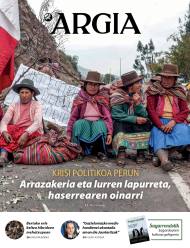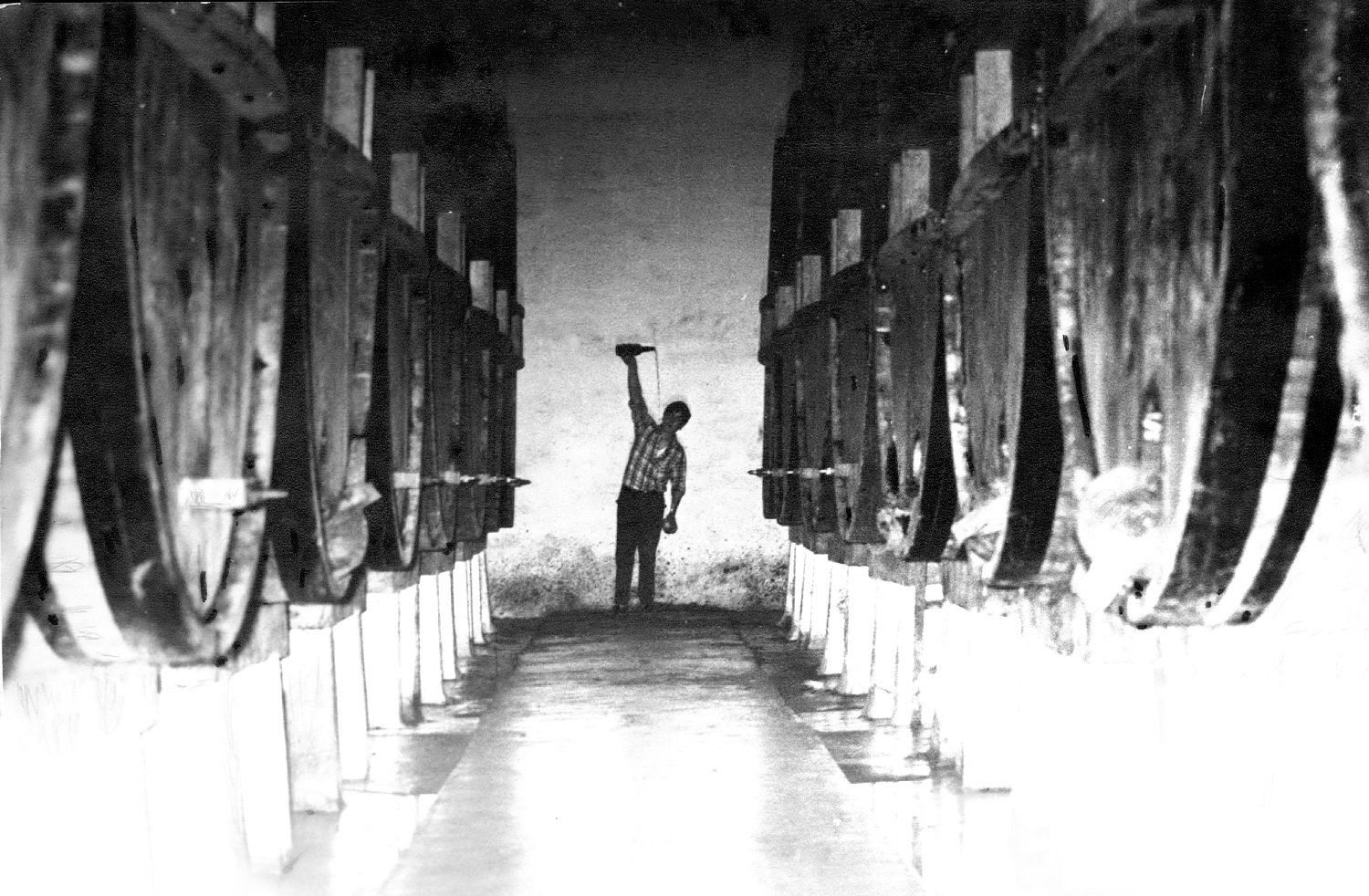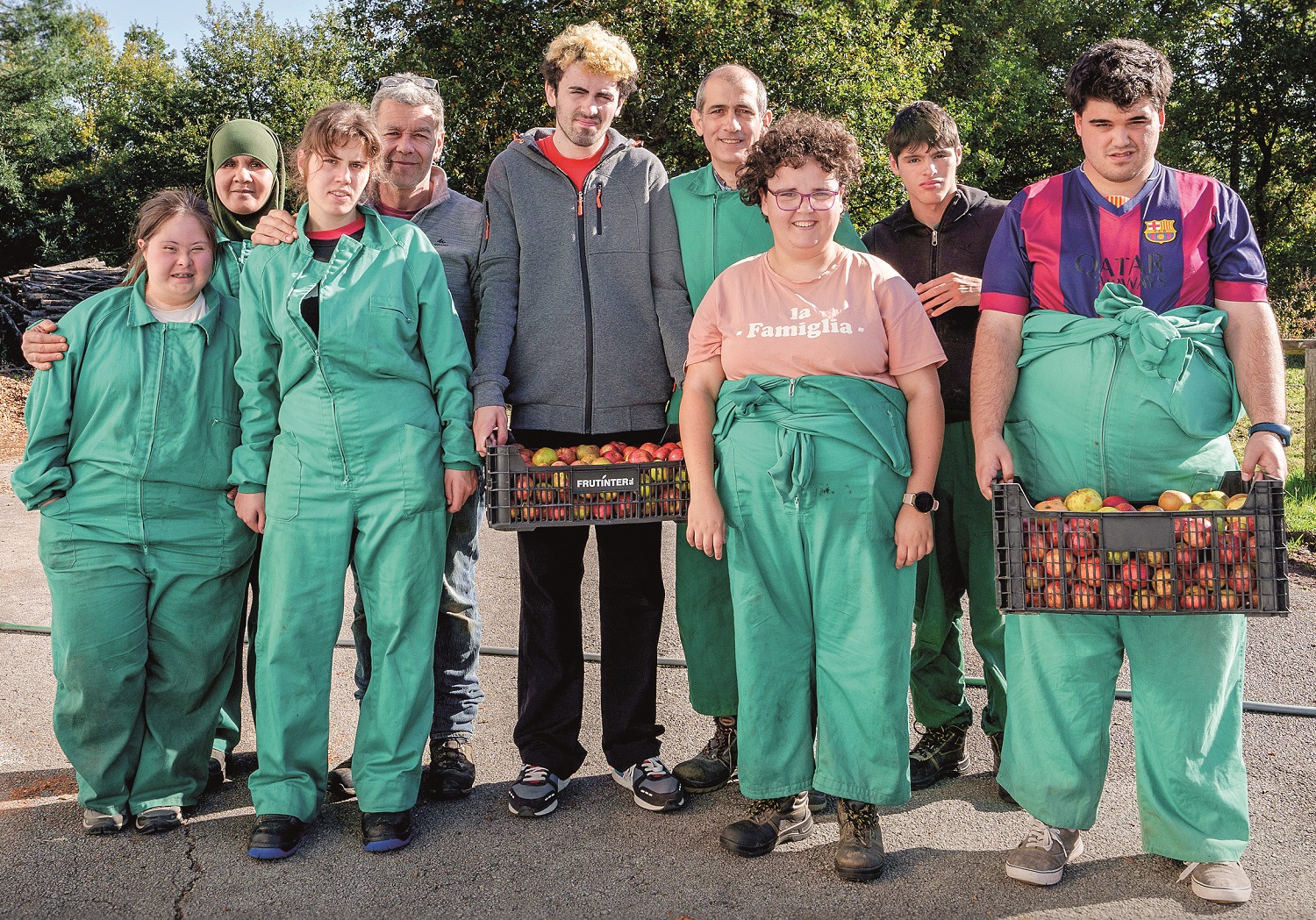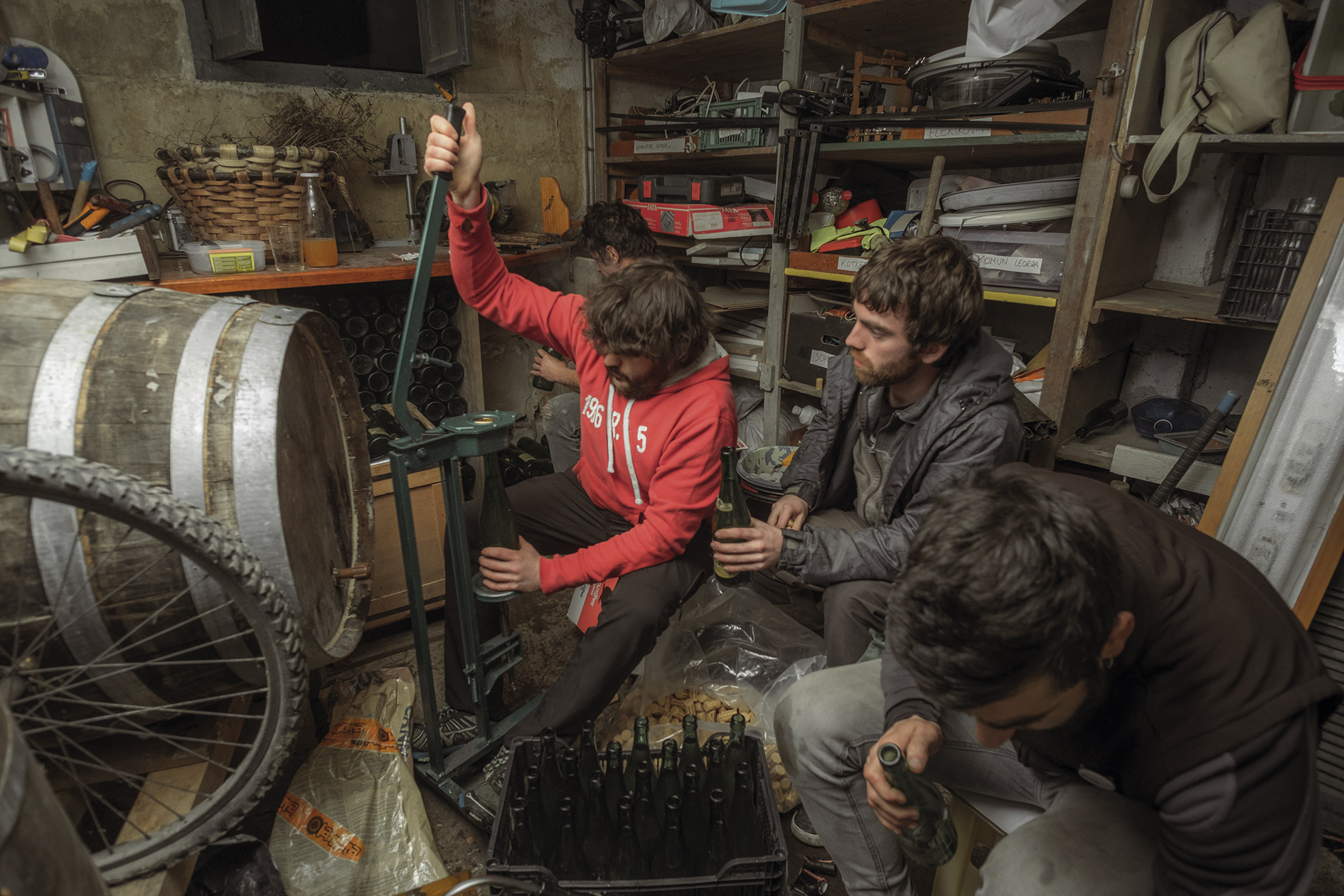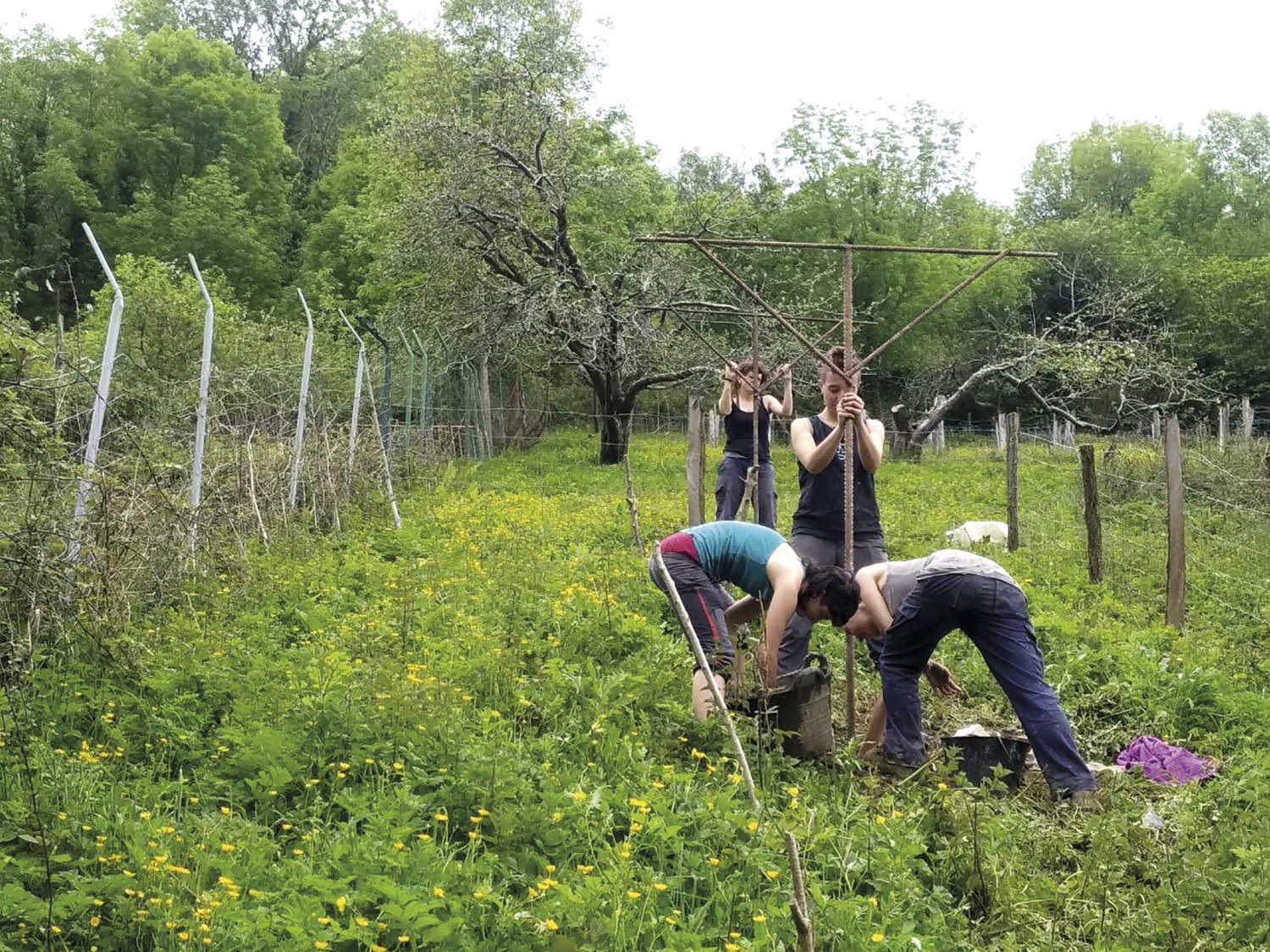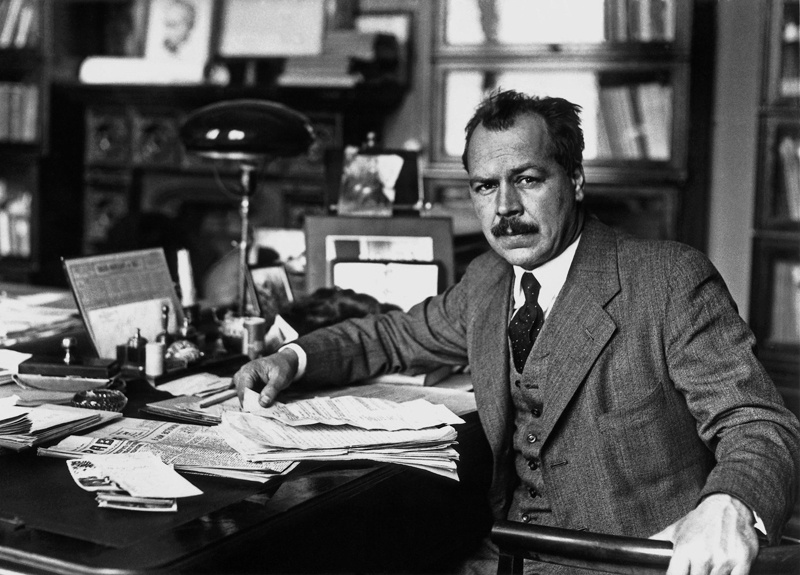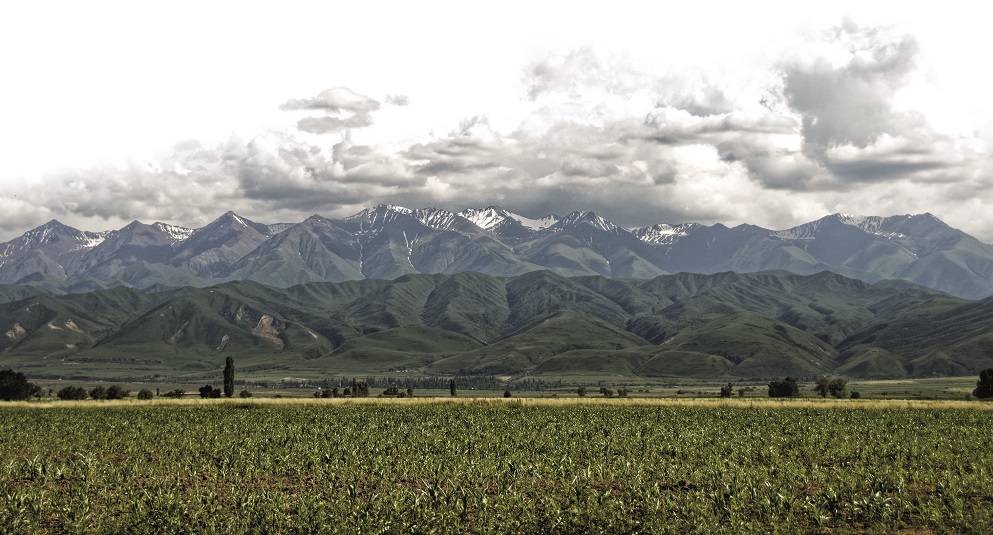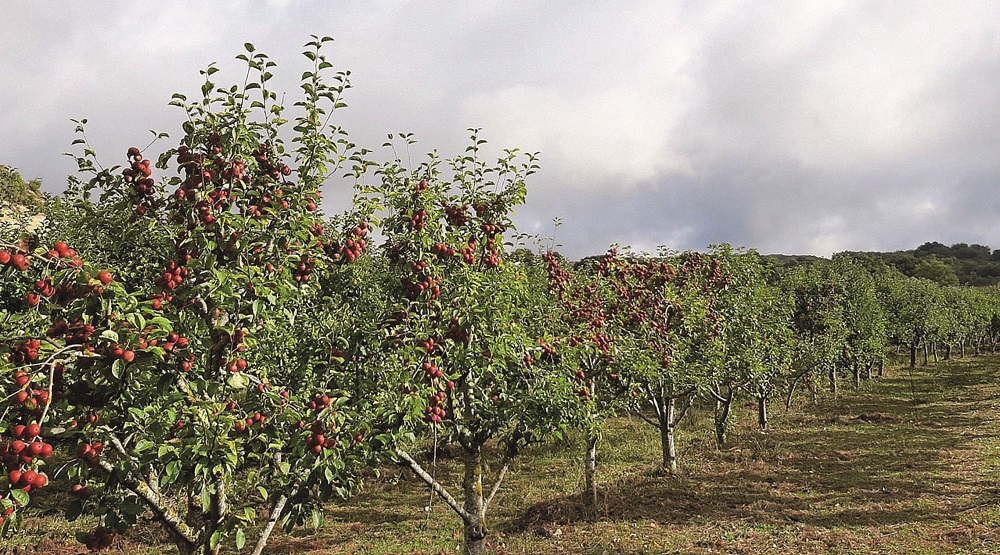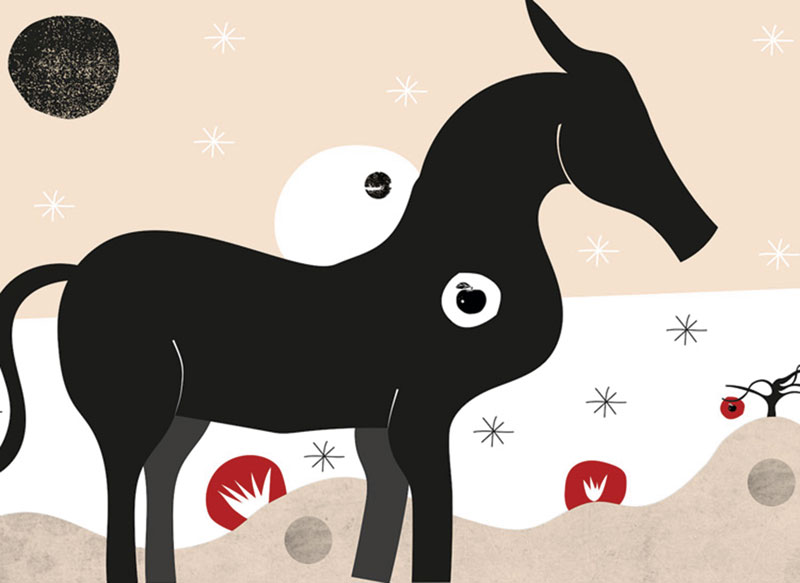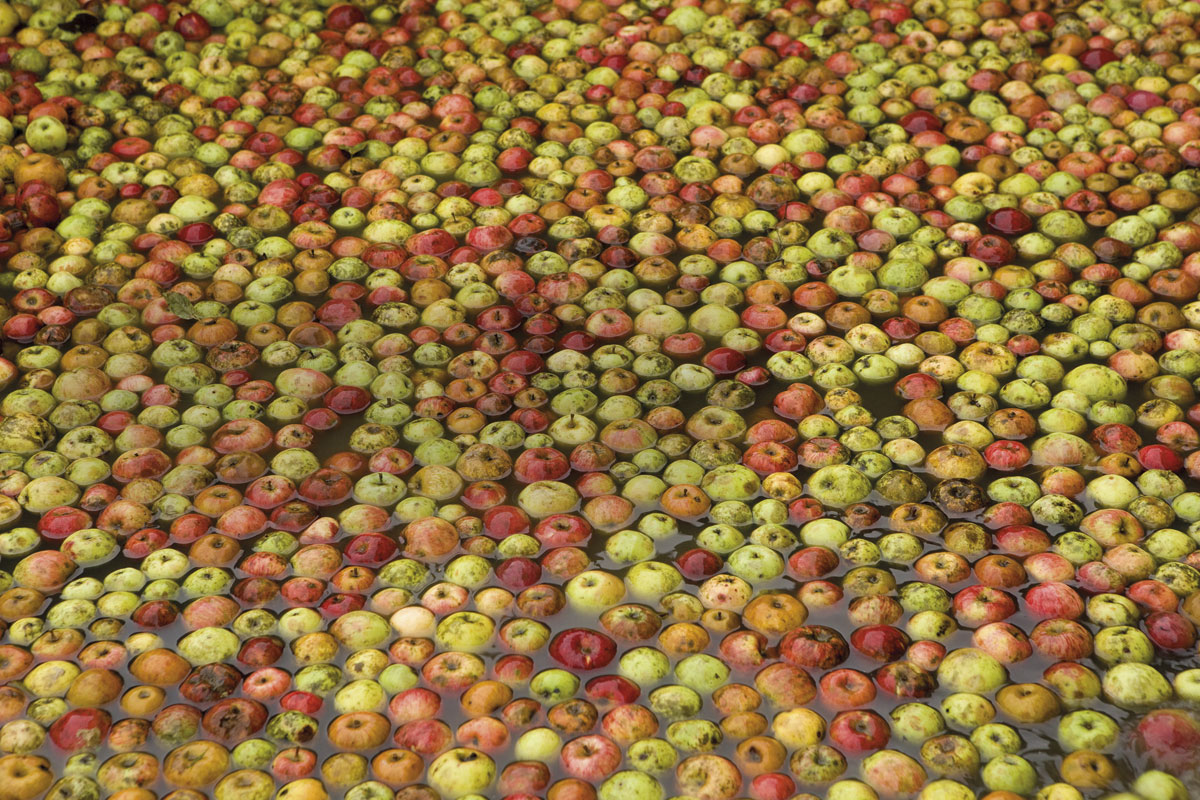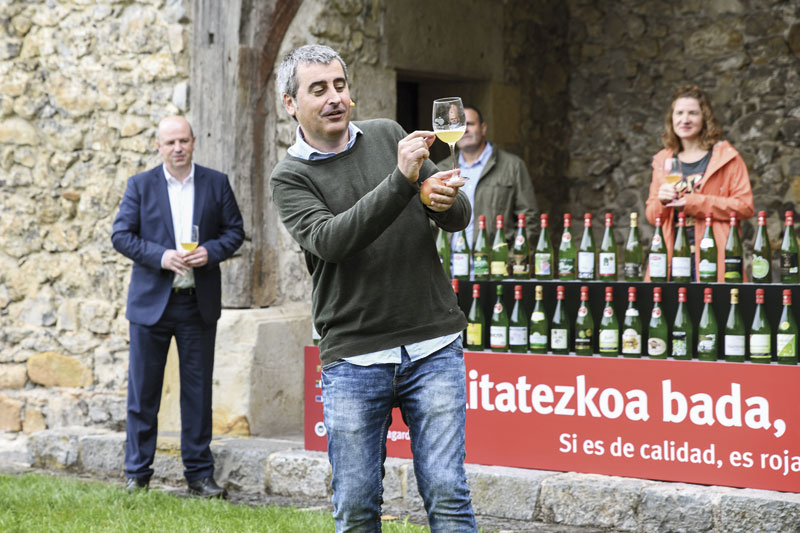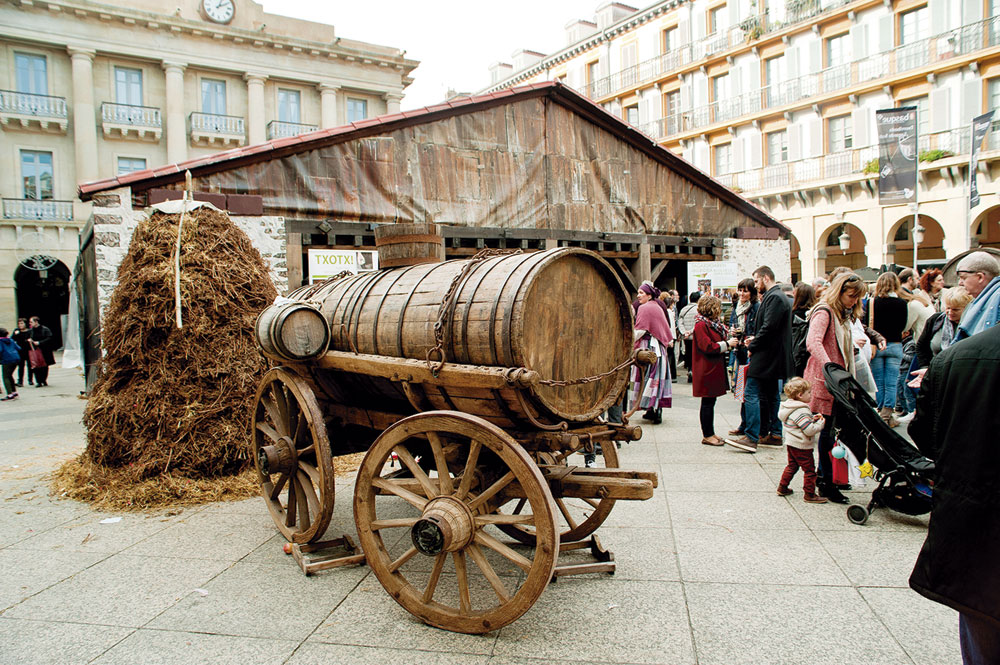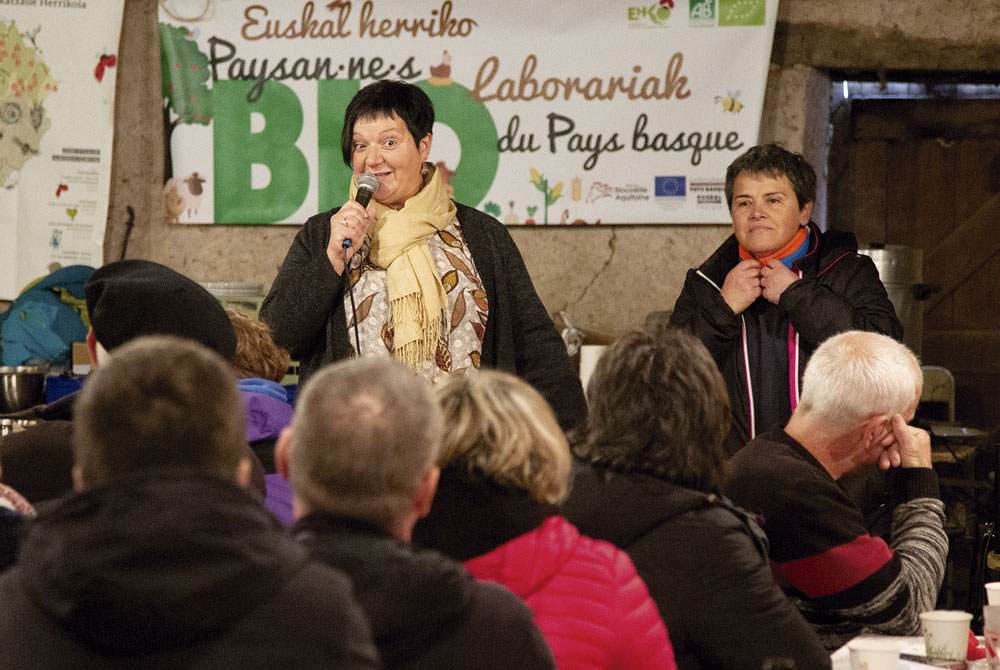The last apple mohicans are still in Baztan
- We arrived in the small town of Arizkun, in Baztan, an afternoon about to be November, and the giant mural of the pediment tells us something about the relationship of the town with the apple. We are told that Batzabalea lives in a man who knows a lot about apple: Pello Mendikoa Maritorena, “the last Mohican” or “the man who grows trees”, as we were told about him before the interview.
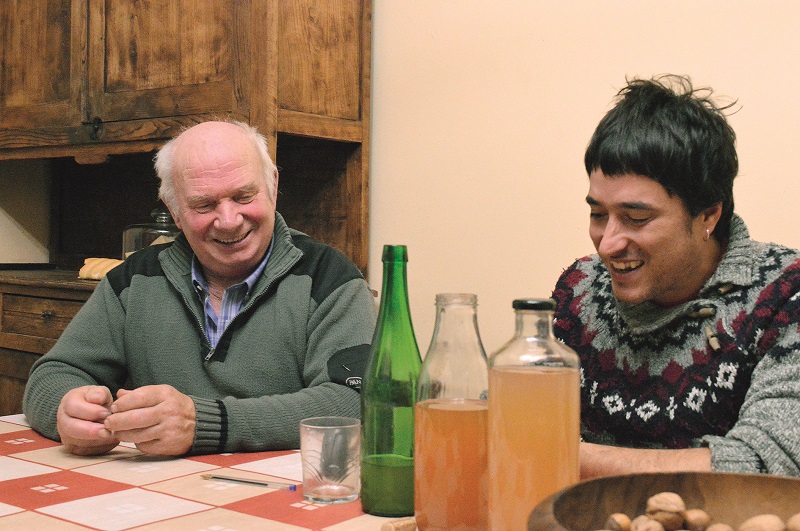
The young reread Xabi Torres Letona and his daughter Mirentxu Mendikoa, Mariezkurrena, have joined the interview that has taken the form of a tertulia, and despite meeting with the excuse to speak of apple, many other things have come back to the table: the life of yesteryear, the passages of their brothers in America, the Germans who sought the gold in Baztan, the paltry. Besides the journalist, Xabi and Mirentxu ask him.
Here you were born and you grew up in Batzabalea House of Arizkun. How was this area in its youth, a lot of apples?
Mendi's hair: By the time I grew up and started with apples, everything was very changed, it was the rest that remained. Apples fell, everything was broken. Finally, this need for the previous apple was lost, as the first apple and chestnut were the basis of feeding in these areas. At that time, a lot of baked apples were eaten, burned in economy and fed for rations. There was no joke! Now we have everything, but then, in the 1950s, there was no dare [prosperity]!
Where did the apple interest you?
P.M.: I realized they were very old and they were leaving the apple. I thought, ‘that old block…’, but it was missing, nowhere! Another, the following year, with the wind, same, lost! So I started thinking, why don't I plan myself and put the apples in here? Golden, kingdoms and those I didn't want to get in, they were industrial and they were. The best is golden or reineta...” (the best is golden or reineta is the best is golden or reineta), hence people. The classes here are lost and lost! So I started.
“I started thinking, why don’t I plan myself and put apples in here? Golden, kingdoms and those I didn’t want to enter, were industrial and existed.” Pello Mendikoa
You were worried about losing those old apples you know...
P.M.: Yeah, the first one that made me sorry, you know what it was? San Juan red. There was a ttar tree nearby, it was very red, it ate when it came with the mares and, "Yes, a sweet apple!" A year later he didn't wind up, and goodbye! I was young and then I began to realize when I was missing that apple I liked. I told Juan Kruz to tell him as soon as possible what apples they were, because I sometimes heard the names of those apples, but I didn't know them, and to get to know them, I had to get to them as soon as possible. Do you want an apple tree? You need to know! As you know, you take time, put another floor, insert...
Did you include the varieties at the foot of the apple base?
P.M. Zenbauk bai, baina beste batzuk ez. Do you know what happened there? In the present centuries, we want it to be done as soon as possible and the apple base needs to be expected between six and seven years. So for me, I was interested in starting to give as soon as possible, to know what apples I picked up. Embedded in other plants, they began to apply for three or four years and… “Aiba! This is an apple like this, and this one is like this.”
Xabi Torres: There are some feet that start giving the apple immediately after their graft, almost one or two years, but these apples last five, eight or ten years. There are others that grow more slowly but last for fifteen, twenty or thirty years. Plants grafted in the base of apple are stained with mantle, although some may last up to 100, 150 or 200 years. They become big and strong trees.
And did you talk before you finally got San Juan red, or did you miss it?
P.M.: Once I pasted the mares, in a parade, I saw there the two apples made, and out of curiosity, to see what they were -- one was wild and the other was San Juan's red. You didn't see that apple tree anymore, and I had no graft! There were two carpenter brothers here, and he said to one of them, “Do you have any way to incorporate it?” He introduced it, he took it, and I brought it together afterwards. Do you know where this apple came from, which has recently been subjected to genetic testing? I just found out… From Russia! Ha, ha, ha.
Some types of native apples are called yourself...
PM: Sure, what do I have to do! The apple iduzki, for example. Do you know why I invented that name? This is a soapy apple, typical of the Gartzabal, but with the yellow skin and the red line, very nice… the red lines that went out into the sun, and that's why I called it!
T.S. : Yes, and the other, Ixursagarra, did not Aritzakundi take it?
PM: Isn't that the Negu apple? We step out of a blur here and get into the vegetable garden. It's called watery by discharge, just like willow. It is a tender apple, but when you enjoy it is good. Here was more, and once I said, “But isn’t this Negu apple?”, “No, it’s Ixursagarra!” We realized it's the same apple, but periodically it's given two or three names.
T.S. : Yes, and back sometimes, because there are those who use the same name for a different apple…
P.M.: That same happened to me with Burdintx. My father was always Urtesagarra up, Urtesagarra down… and once a village led me to teach apples to his house and asked me, “Do you know these apples?”, and I did, “How many do Burdintxe and other Urtesagarra tell you?” Two names were used for an apple! Well, for me, Urtesagarra is different, but people used the same name for both.
T.S. : Another is aguinaldo…
P.M.: Yes, but egonsagar is not an apple class, it is a characteristic of concrete apples. They're apples that last, they last a long time. For example, the Burdintxe is long and the Negu apple too. Those are the mushrooms. Many times leaves are lost more physic than apples!
With whom did you learn from apples, Pello: take care of them, vaccinate them…?
P.M.: My father knew it, he incorporated it into the lightning and so I learned to see. I remember the first vaccine I made was here, in the orchard, and not in the foot, in the upper part, in a branch! The fungus was for my father, if it didn't take me well because it was broken. Just in case… and so I went into a branch and took it! In addition, there was no dressing! (Laughter). Once you've learned, then you do it yourself, you get out of each other, maybe not… because you learn from ariz!
How is the insertion process performed?
P.M.: First comes the graft, a branch that has gone out a year.
T.S. : Pello tells me how to remove the graft: it is cut, surrounded with a damp cloth and grounded, and there it is kept for fifteen days because we want the graft to be asleep. We want the graft fungus to be more on than the graft, and when it starts to warm up or ignite… heap! The foot makes the vaccine and ignites the graft.
And where did you learn, Pello, that method?
PM: I haven't invented anything, that's always been known. It's common to realize things. You may read many times, but you have to realize things, be an observer, if you haven't heard of the deusto.
Mendikoa's Mirentxu: Yeah, and that's one of the things about his father's nature, which has another way of looking, he realizes many things that we're not aware of.
So far we've only talked about apples, but I guess many other plants and trees would also get that special look, right? Interested from a young age?
P.M.: When I was about nine years old, there were around the merenda (nurseries), and one of them introduced two or three thousand oak plants nearby to sell in three years. He taught the nine-year-old that it was me how to cut the twigs: “Leave the middle, the whispers, and cut off the other side,” he explained. That's where the hobby came in! On Thursdays we had the afternoons free from school, and there I was going to sprout, the clax-klax-klax… think they were thousands!
M.M. A nice story. Today this stand will be about 60 years old, some of which here were also planted in our house. Well, recently the wind knocked down one, and as we're going to renovate the roof, we took advantage of oak wood to enter the new structure. It is nice that my father has seen the whole process: now we have plant wood planted as a child on the roof of the house, the cycle has been closed.
He said he shared with his brother the fondness for the trees…
PM: Yeah, me and my brother, the hobby. My brother was a priest and was a missionary to America, to Massachusetts, but he came in summer and one day we went to Bertiz. There, looking at the trees, we came up with the idea: “Fuck, if you do it here you will also be at home!” My brother told me that he was going to send me seeds from America, which I wanted, and I started putting trees on the edge of Aritzakun: there are redwoods, Japanese cherry trees, red cedar, spruce from Afghanistan, pine from India, cedar from Lebanon, spruce from Sitka, cypress, cypress swamp -- there is one hectare cultivated.
“My father incorporated him into the lightning, I learned from seeing him. The first vaccine I made was here, in the orchard, and not in the foot, high, in a branch. It was for my father, if I didn’t take it well because the fungus was damaged.” Pello Mendikoa
And did the people nearby understand their fondness, what did they say to them?
P.M.: Ha! They had nothing to say… I thought the forest guards would ask me, but no, nobody came. Surely there would be no interest. In a time there was no current rush, when people planted it, do you know what it was saying? “Someone is going to get caught!” they didn’t think “If I’m not going to plant…”. That is a mistake. But people now don't understand it. Why? They ask. That old mentality has been completely lost.
But one day Xabi and the company appeared wanting to give him continuity. What did you think? Because you were also worried about losing what you have saved…
P.M.: I always thought, “within 20 years someone will appear!” Yeah, I always thought that. “I go, but someone will follow.” Like you (addressed to Xabi), if you ever have them, you will not follow, but there will be someone else, and that knowledge that you have learned will pass to another. Yeah, yeah, I always thought that, and look, they showed up!
And you, Xabi, where did you get to Pello moving?
T.S. : I started with txalaparta classes with the Larralde in 1997, and from there I met the kirikoketa: it's a variant of Basque percussion, they took the pesons to play the apple and made music about skateboarding with work tools. We learned to value the local, to relate to instrumental work. Here was an old house with lagar, and we also started to reform it, which later became the seat of our cultural group, the Gamoniarre. Think about it, I didn't know before that was a cider, but look how far our buildings are and those based on that story. An apple counts back. So, from the kirikok we met the basket, the architecture, the papers, the story… and we also met people like Pello.
And they gradually take over…
T.S. : Yes, no, there are still people like that, which makes you see the value of all this. They had great knowledge of being in touch with the environment. In the end an apple is lost and a knowledge and value accumulated for centuries is lost. Now is the time to avoid it, because, on the other hand, there are ‘the last Mohicans’ like Pello, some last echoes, which in many cases are only on paper… People have usually worried about their loved one: in Gipuzkoa they have been interested there, in Asturias alike… Because Baztan has a great accumulated knowledge that is not of interest and that is lost from global reality. Therefore, it is enough to acquire more and more knowledge, to know things closer and to have ways to get bread as close as possible. Better not to lose all this, if not, then we will be chattering in this new world…
-----------------------------------------------
TERTULLIANS
Pello Mendikoa Maritorena
Born and raised in 1949 in Arizkun Batzabalea. Since his childhood he has been interested in plants and trees, and among other things, he has worked to keep alive the old varieties of Baztan apples, vaccinating the apples that were about to die and getting rid of their loss. Its activity and its mime has not been limited to apples, although it has planted around the edge many species of unique trees brought from outside, with the idea of ‘If you can do it in Bertiz, why not here?’. The gps map of the old trees in the area has it in the head and gives Xabi Torres coordinates for trees that it is no longer able to reach: “In the back wall of the Lekaroz X borda there is a very special cherry…” or “In Casa Z they have wild pear or tear…”.
Xabi Torres Letona
Born in Elizondo in 1981, he began to enter the world of the Baztanese apple through the cultural association Jo ala Jo and Kirikoketa, being young. During these years work has been done on the remodeling of the Gamíbar lizard, as well as on the collection of knowledge and knowledge about the native apple, an important heritage of the Baztan. It was on this road with Pello Mendikoa and others from the previous generation, starting a nice relationship. It has recently formed the cooperative Eztibeltza and has taken over the steelworks Larraldea de Lekaroz with several members. “We wanted to make sense of what we have done so far,” he says. The chain has not been interrupted and it is special that intergenerational transmission has crossed family ties.
Mirentxu Mendikoa Mariezkurrena
Pello's daughter, a person who has bridged and enriched dialogue and prepared a tasty morsel. Although he says he has not followed his father's path, it is clear that during these years he has paid attention and taken what he has learned and received from him.
-----------------------------------------------
APPLES BAZTANESAS
Torres has collected the varieties preserved by Pello and collected to others, all cultivated in the apple of their dwelling, marking on a color map each of them, where they come from and who comes from. “Aim what varieties we have!” says Pello. Muralla, San Juan Blanco, San Juan Rojo, Amabirjinagarra, Apple Anis, Apple Iduzki, Gartzabala, Burdintxe, Eztigorria, Eztiuria and Eztibeltza (to this last name has taken the cooperative of Xursagabi, Oreela









